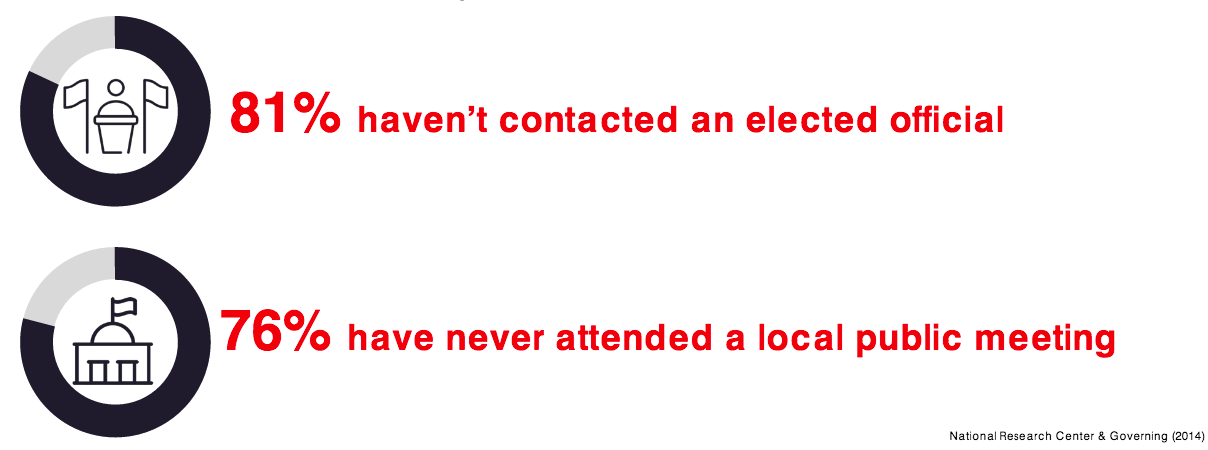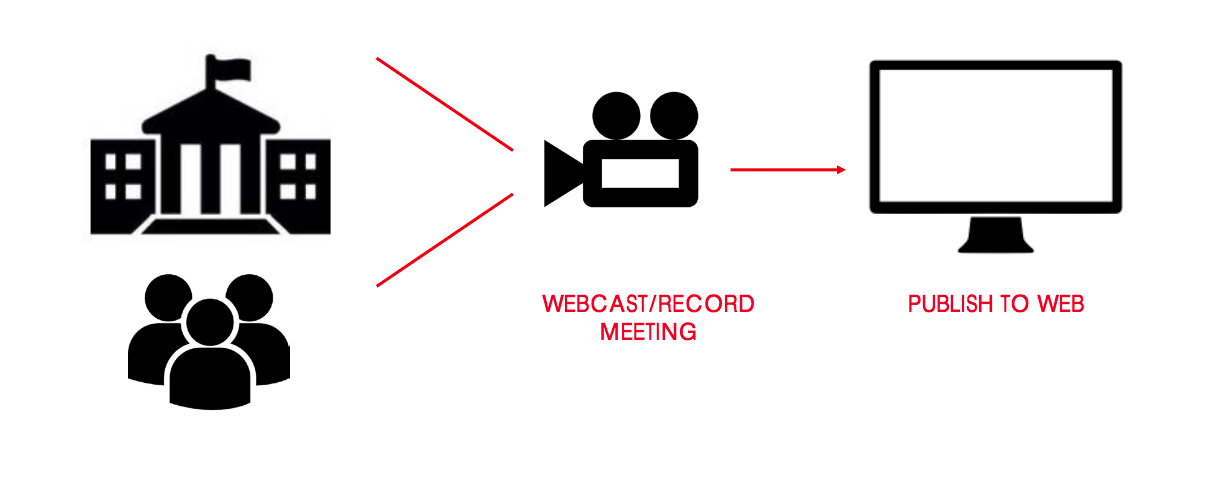
In the digital era, the effectiveness of the public sector increasingly relies on transparency with constituents. As younger generations start partaking in the political process, all levels of government face uncertainty with how to adapt.
Granicus’ Video Webinar on November 15 focused specifically on this issue and highlighted how governments can modernize their digital communications with little effort and manageable cost.
Recorded video that is available live and archived online for any medium—mobile or desktop—is demanded by the modern constituent.

In 2016, nearly 25 percent of households surveyed said they did not have cable streaming in their home, meaning the days of cable access and the popularity of watching local meetings live on television are waning. On-demand video is slowly replacing live television and cable subscriptions. Granicus Video indexing supports the ability to choose which parts of a program are most relevant and important, allowing citizens to start watching video where they feel compelled—much like a consumer can jump to any spot on their favorite Netflix show.
While videos are streaming and when they are later archived, they can be searched by agenda items from the automated indexing Granicus Video provides. Rather than watching a multiple-hour meeting to find a specific 10-minute clip, viewers are able to search the video for the point where their agenda items of interest are mentioned and simply watch on-demand.
Governments should take advantage of this technology by cross-promoting their meetings on personal or official social media sites to allow citizens, the media and internal government employees to have access instantly. This allows an increasingly tech-savvy audience to watch on their own time and frees up space in the meeting chamber.
Federal law protects people visually and audibly impaired so they can partake in public services, particularly with video. The Federal Communications Commission (FCC) requires all internet video initially shown on television with captions be captioned when uploaded online. At the state level, these restrictions can be more stringent and specific around Section 508 standards, leaving organizations vulnerable if they don’t consider additional accessibility services for their content.
Closed and live captioning is available as an additional service for Granicus Video through meeting services. Captioning makes searching through indexed video easier for citizens and employees as it searches all spoken word captions for appropriate terms along with agenda items associated with pieces of the video clip. Most importantly, Closed Captioning makes video completely accessible for hearing-impaired individuals, who make up about 15 percent of American adults.
Streaming companies have been required to offer closed captioning on all programming since April 2014, and while the laws haven’t been applied to all online video streaming services, organizations who use captioning are able to implement it as a safeguard for themselves against future changes and to better serve their communities.
Although video has clearly demonstrable benefits for citizens, employees who can’t attend meetings regularly and elected officials also benefit from live and archived online meetings as research tools.
For example, if one topic spans two different meetings, elected officials are able to go back to the first archived discussion and, with index tools, find the original conversation to use as reference while they prepare for the second half of the discussion. For employees who can’t attend late meetings or are restricted by the number of seats in the conference space, utilizing video can be an excellent way to stay abreast of important information or decisions.
Implementing captions with Granicus Video can also simplify post-meeting minutes creation, as all caption transcriptions are available to users after video is recorded.
Granicus Video uses encoders that are currently available for almost any existing audio/video equipment. As a nearly universal service, Granicus’ servers work with both digital and analogue cameras and microphones to capture meetings as they happen and stream them in an iFrame on your organization’s website.

Backed by a content delivery network (CDN) of more than 400 sites, Granicus’ streaming is backed up across hundreds of sites, allowing servers to access local data centers (the bread and butter of web-streaming) rather than rely on sites hundreds or thousands of miles away.
Granicus Video has extensive configurability and applications for local, statewide and federal agencies. If you missed the Granicus Video webinar on November 15, you can watch it on demand here. For more information on Granicus Video, be sure to connect with us at info@granicus.com.